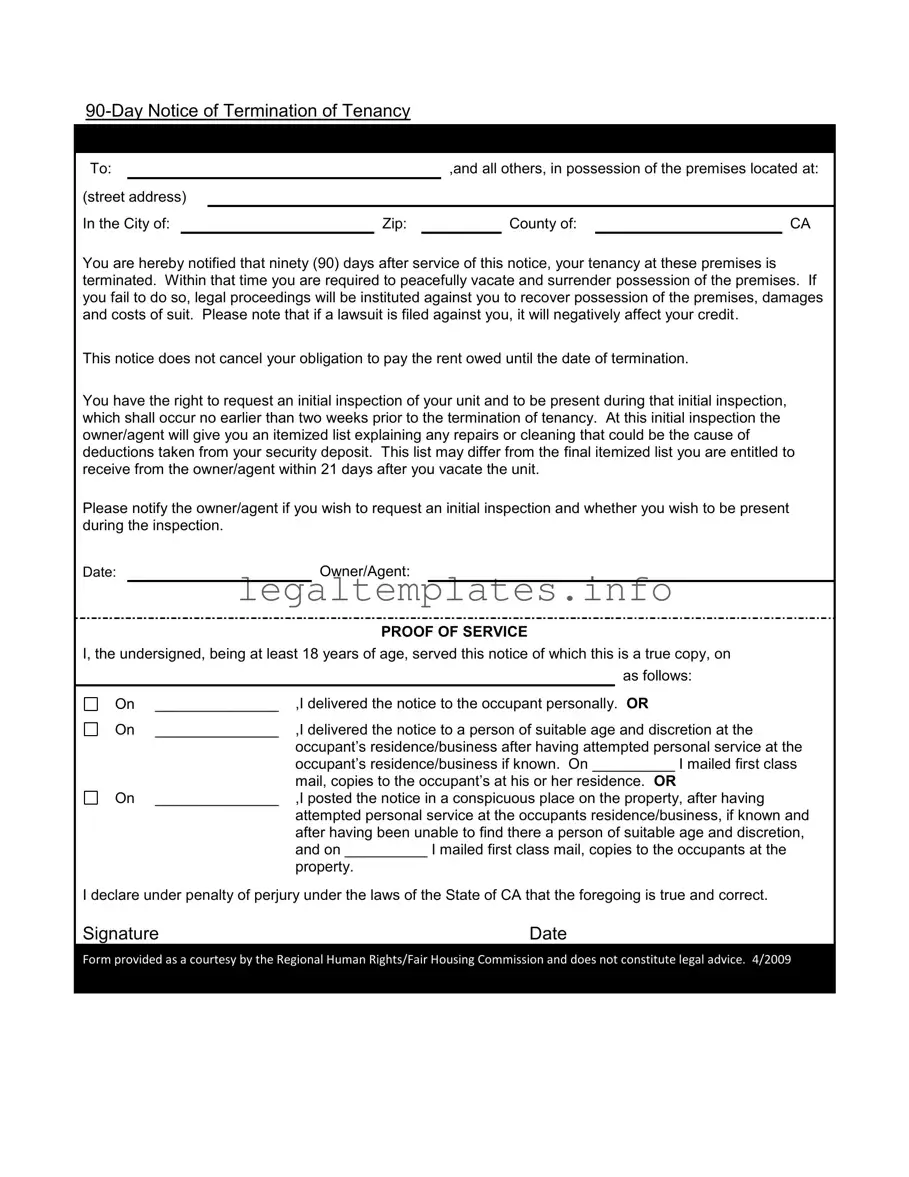What is a 90 Day Notice To Move Out?
A 90 Day Notice To Move Out is a formal document given by landlords to tenants to terminate their tenancy. It requires tenants to vacate the premises within 90 days from the date the notice is served. Failure to leave could lead to legal actions to reclaim possession of the property, alongside possible damages and costs of the lawsuit.
Does receiving this notice immediately cancel my obligation to pay rent?
No, receiving a 90 Day Notice To Move Out does not cancel your obligation to continue paying rent up to the termination date specified in the notice. You are required to fulfill your rent payment obligations until you legally terminate occupancy.
What happens if I don't vacate the premises within the 90 days as instructed?
If you fail to vacate within the mentioned 90-day period, the landlord has the right to initiate legal proceedings against you. This action aims to recover possession of the property and may include claims for damages and legal costs. Such lawsuits could negatively affect your credit score and rental history.
Am I entitled to an inspection before moving out?
Yes, you have the right to request an initial inspection of your rental unit no earlier than two weeks before your tenancy ends. During this inspection, the landlord or their agent will provide an itemized statement of potential deductions from your security deposit for repairs or cleaning. You also have the right to be present during this inspection.
How will the initial inspection affect my security deposit?
The initial inspection gives you a chance to rectify any issues identified that could result in deductions from your security deposit. While it provides an early idea of possible charges, the final deductions will be based on the condition of your unit upon move-out, and you will receive an itemized list of deductions within 21 days after vacating the premises.
What steps should I take if I wish to request an initial inspection?
If you decide to request an initial inspection, you should notify the landlord or their managing agent of your desire for the inspection. Be sure to indicate if you intend to be present during the inspection. It's advisable to make this notification in writing and keep a copy for your records.
How is the 90 Day Notice To Move Out served to a tenant?
The notice can be served in several ways: directly to the occupant personally, to a suitable person at the occupant's residence or business if personal service is not possible, by posting the notice in a visible place on the property followed by sending a copy via first-class mail, or simply by mailing it to the occupant if other methods of personal service have been unsuccessful.
What are the legal implications of a lawsuit if I fail to move out within 90 days?
A lawsuit filed because you didn't vacate the premises as requested can have several consequences. Aside from potentially being evicted, you could be liable for the landlord’s legal costs and any awarded damages. Additionally, such a lawsuit could negatively impact your credit score and make it difficult to rent property in the future.

